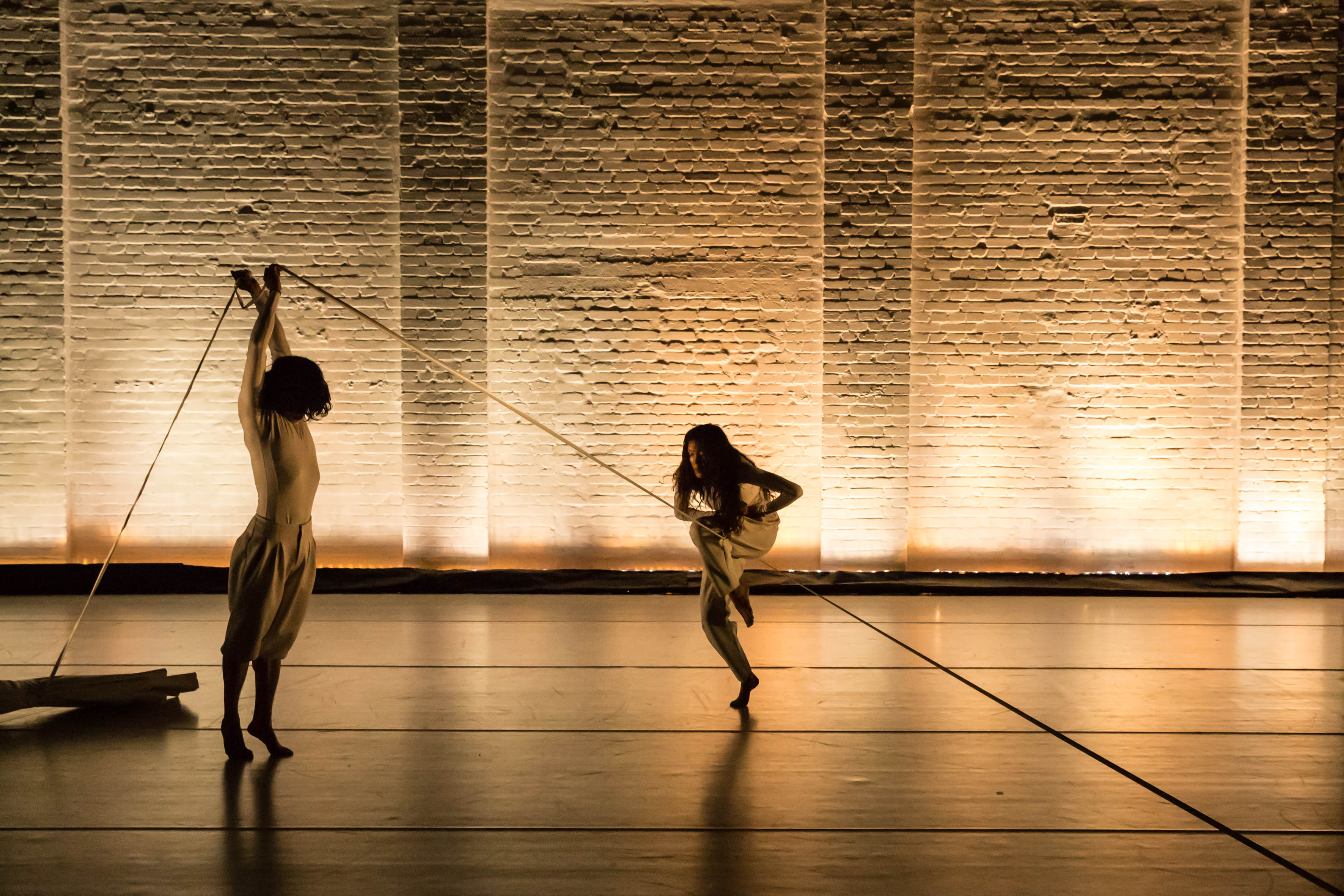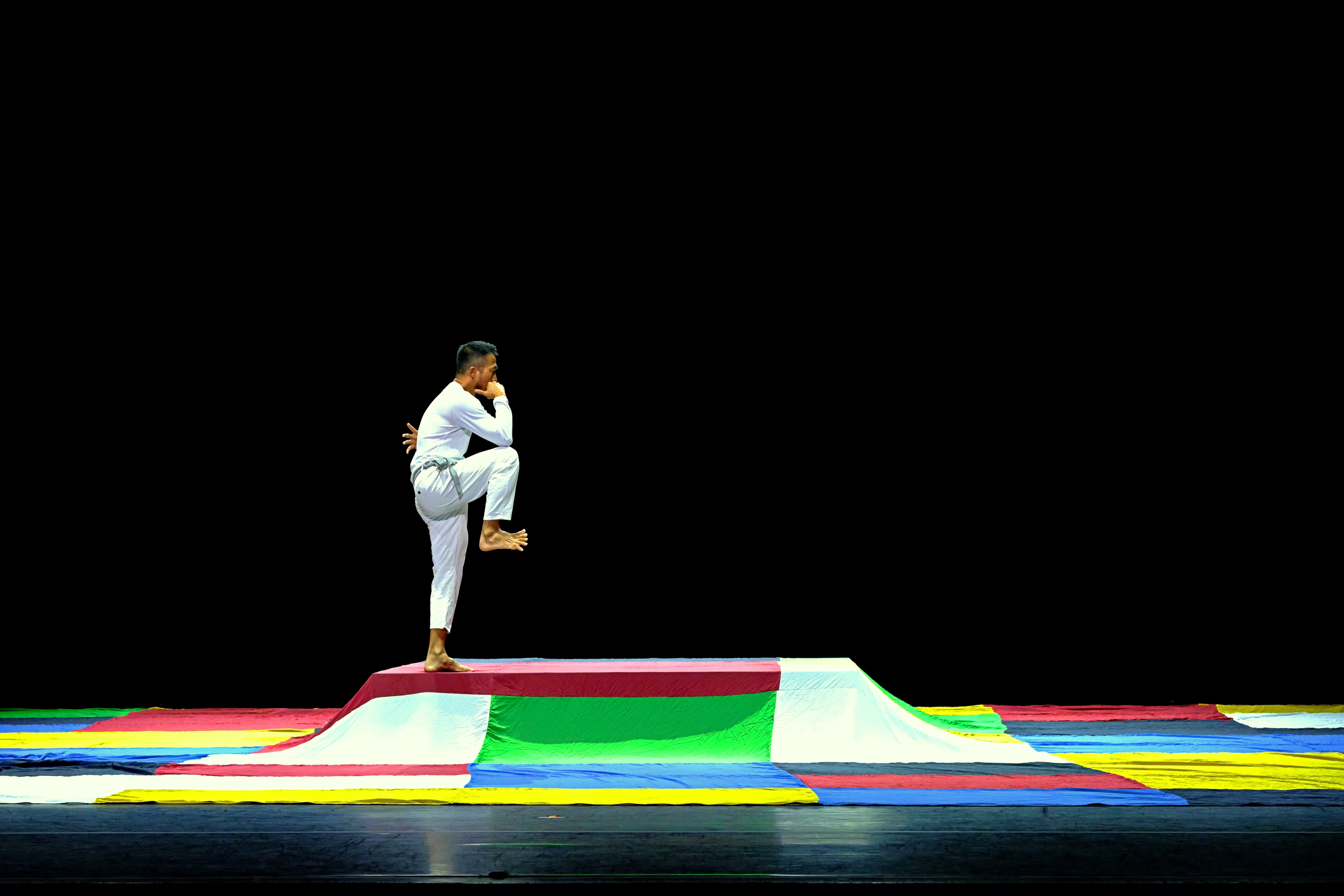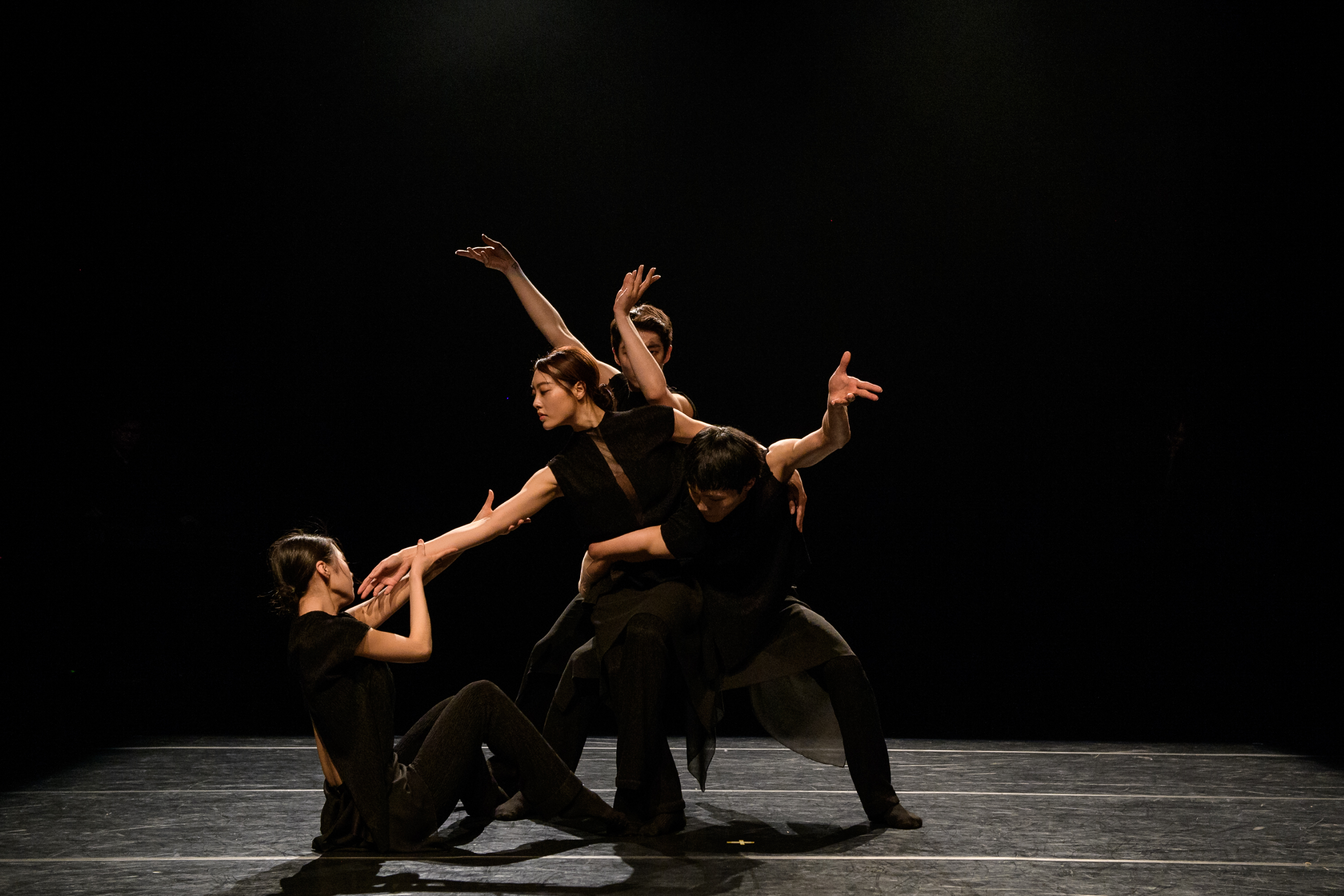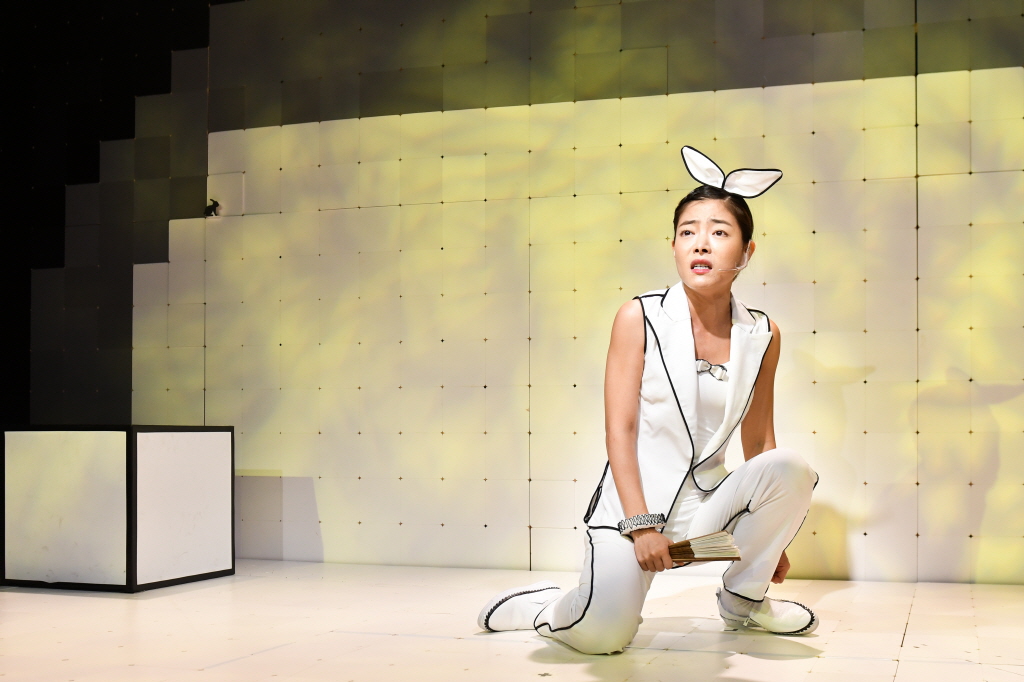Performance Info
Performance Info
About CompanyArt Project BORA is a project group led by Kim Bo-ra that has made many remarkable achievements both home and abroad. It uses a unique color and vocabulary to create “images” and an “orchestra of the senses” that differ from other modern dance projects that focus on logic and concepts. Art Project BORA uses unique and witty “image-telling” choreography to break preconceived notions of genre and space and stimulate the audience’s emotions.
IntervieweeArtistic director & Choreographer Kim, Bo ra
Interview
Q: Tell us about Art Project BORA.
Art Project BORA was founded in 2013 as a modern dance creative group with five regular members and 10 project group members. The group focuses on and explores the phenomena of the body and attempts movement variations to find the original form of the body. In addition to holding performances, it undertakes research and residency programs, dance education programs, and special movement programs for disabled children.
Q: “Tail Language” is one of Art Project BORA’s definitive works. You once said that this piece focuses on body language and teaches us to regard the images of the body without preconceived notions. What kind of message or story did you want to convey through this work?I believed that body language could overcome the limitations of verbal language. There are times when language distorts communication. I wanted to break language barriers through tail signals. I once heard that animals express their status and tastes through their tails. If their tail signals can become language, then perhaps humans can also use body language for basic communication in addition to socially-learned languages. Since I started this choreography visualizing animals, when I was planning the movements I visualized the vast open land. Humans walk on land with their two feet, but in “Tail Language” I wanted the dancers to walk on all fours or imitate the movement of tails. Since the spine serves as the body’s column, I thought it could be a symbol for our entire body. I choreographed movements in which a part of the spine moves along the ground.
Q: “Muak” was inspired by composer Yun I-sang’s orchestral piece of the same name and proves to us that even if you deconstruct dance and music, their essence does not change. Please tell us more about this work.When I looked into Yun I-sang’s life and “Muak” the key word “loss” came to mind, along with the following questions: What is dancing music? What kind of music makes us dance? What is dance? I decided that the work’s movement would be deconstruction, so I deconstructed form, function, texture, and material. And my conclusion was, in spite of all that, the essence of music and dance does not change. In the end, when I thought about deconstruction and dance together, I thought, “Why can’t ideas, questions, and stories be the starting point of motivation?” So based on the concept of deconstruction, I began to “deconstruct”/dismantle a piano. Then I thought, instead of piling up material to create a scene, can’t we just use the material as is?” And so, from the moment we first started disassembling the piano and totally tore it apart, and while the motivation to dance began to form, we showed the material as is. And the movements were made through improvisation and coincidence.
Q: “Somoo” regards the female body as a serious subject for observation. What kind of questions did you want answered, and what methods did you use to propose a new image for the human body?“Somoo” uses traditional topics from a modern viewpoint. “Somoo” is the sole female character in the Korean traditional mask dance. I began this work questioning why the role of Somoo no longer exists in modern society. In my modern take on Somoo, I did not limit myself to telling a story about her life or role in society. Instead, the female body itself became the theme. I approached the body as form, substance, and subject. “Somoo” is performed on a shallow pool of water and focuses on the structure of the female body, particularly the movement of the pelvis which surrounds the uterus. In order to highlight the triangular structure of the pelvis, we used long elastic rubber bands as props. A geomungo (traditional Korean zither) appears on the stage. In modern society, many works compare the female body to a musical instrument. We used the geomungo as an objet of resistance to this metaphor. An instrument cannot make music on its own. However, the geomungo which appears in “Somoo” has motors attached so that it can play music without a player.
Q: From “A Long Talk to Oneself,” “Gaksi,” and all other works following “Somoo,” tell us about the significance of the feminist perspective in your works.Through dance choreography, I came to believe in the value and greatness of the body. My works spring from my life and body, to which I add the stories that touched me, other people’s memories, and the lack of communication—all these topics merged and developed into a feminist perspective. Even though I am simply talking about the body, I think feminist ideas seep through because the subject of the body is rooted in time and history. If my past works showed a feminism viewpoint, I wonder what other messages I can convey through the limitations of the body. These projects were meaningful in that I came to possess a variety of perspectives.
Q: Your most recent work “Dot.” was commissioned by the Korea National Contemporary Dance Company (KNCDC). Tell us about this work, which focuses on constant transformation.“Dot.” came to being when the KNCDC invited me as a guest choreographer. During the pandemic, I began to question the meaning of time and wondered how I could tell a visual/imagery story about it since it is invisible. I placed a huge see-through balloon on stage because I wondered how the dancers and this dance would survive inside it. This work explores the dancers’ bodies, mobility, spontaneity, and coincidence.
Q: “공•空•Zero” was co-produced with the Marc Brew Company, a UK-based performing arts company, to commemorate the UK/Korea 2017-18 Creative Futures Festival of Arts and Disability. What is the message of this work?As the title suggests, “공•空•Zero” began from zero. Marc Brew is a prominent wheelchair dancer and choreographer. We thought about how we could collaborate and came up with the key word “gravity.” We discussed our ideas and threw questions at each other about gravity. We came up with 20 rhetorical questions and experimented on each other’s bodies. In this work, we do an improvised dance with a huge rectangular-shaped floating block that looks like a heavy slab of marble, but is actually a helium balloon. “공•空•Zero” was a work of questions without answers. I want to continue creating dances that ask questions about the world.
Q: When explaining how the body can co-exist on the stage, you use the terms “sensory experiment of images” and “image-telling.” How do these reflect the direction of your choreography?In my work, I want to create something that goes beyond what language can define or convey. To do this, I overlap images and connect them. I was curious about what I can say through images, and I believe it would be possible to convey images containing all the senses through dance. Since then, I have used the term “image-telling.” After experiencing incidents caused by the absence of communication, I came to believe that there is a method of communication that surpasses language. Images can be very abstract. However, instead of giving a straightforward message, I wanted there to be room for various interpretations. As these ideas progressed in my mind, I also wondered how I could show “abstraction” on the stage. In my future work, instead of trying to make the abstract concrete, I want to continue leaving the abstract in its abstract state and stacking material upon material.
Production Details
Major Productions〈Tail Language〉
〈Somoo〉
〈Muak〉
〈Dot.〉
〈A Long Talk to Oneself〉
〈Gaksi〉
〈Gong•空•Zero〉
- 2019 OPEN LOOK Int’l Dance Festival, Russia
- 2019 The Place ‘A Festival of Korean Dance’, UK
- 2019 Theatre Varia, Belgium
- 2019 Staatstheater Darmstadt, Germany
- 2018 John F. Kennedy Center for the Performing Arts, USA
- 2018 Potsdamer Tanztage, Germany
- 2015 Festival Internacional Cervantino, Mexico
- 2014 December Dance, Belgium
- 2014, 2016 Rencontres de Chorégraphiques Internationales Seine-Saint-Denis, France
www.borarts.com
artprojectbora
art_project_bora
Production Details
- Director
Kim, Bo ra
Art Project Bora uses the medium of contemporary dance to dismantle conceptions of genre and space and engage in cross-genre experimentation. Subjects of contemporary relevance are explored from a variety of perspectives, resulting in inventive, witty dramas defined by a grotesque aesthetic and cinematic choreography and production that evoke a strong emotional response in the audience. Major works include “Tail Language,” “Somoo,” “Gaksi,” “A Long Talk to Oneself,” “Frankenstein” and “I’m Not There.”













 PREV
PREV
 황수현_나는 그 사람이 느끼는 것을 생각한다 ⓒ이의록(0).jpg)
.jpeg)

 제공 ⓒ옥상훈.jpeg)


.jpg)
 Youngmo Choe.jpg)
.jpg)











